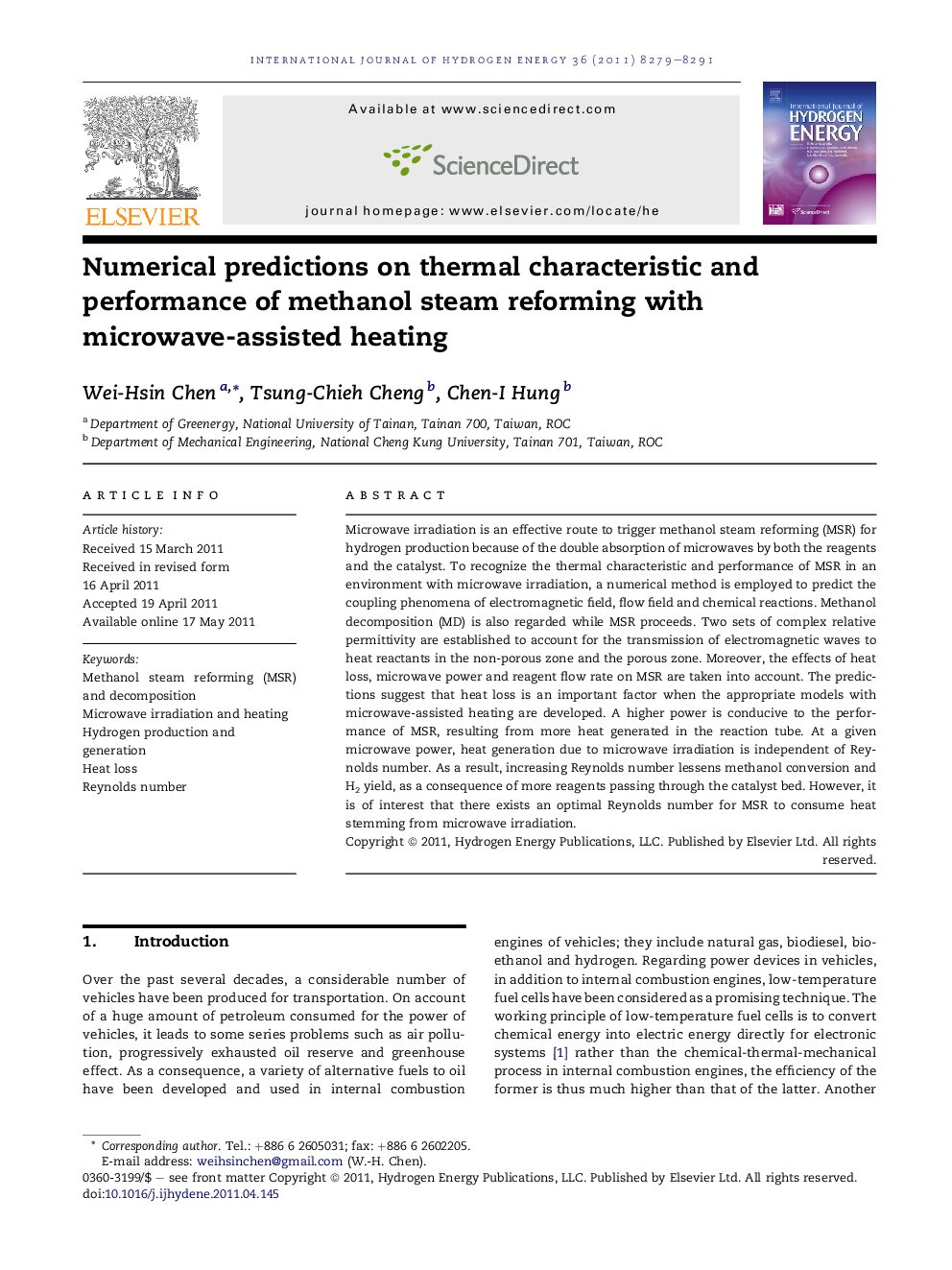| کد مقاله | کد نشریه | سال انتشار | مقاله انگلیسی | نسخه تمام متن |
|---|---|---|---|---|
| 1279141 | 1645388 | 2011 | 13 صفحه PDF | دانلود رایگان |

Microwave irradiation is an effective route to trigger methanol steam reforming (MSR) for hydrogen production because of the double absorption of microwaves by both the reagents and the catalyst. To recognize the thermal characteristic and performance of MSR in an environment with microwave irradiation, a numerical method is employed to predict the coupling phenomena of electromagnetic field, flow field and chemical reactions. Methanol decomposition (MD) is also regarded while MSR proceeds. Two sets of complex relative permittivity are established to account for the transmission of electromagnetic waves to heat reactants in the non-porous zone and the porous zone. Moreover, the effects of heat loss, microwave power and reagent flow rate on MSR are taken into account. The predictions suggest that heat loss is an important factor when the appropriate models with microwave-assisted heating are developed. A higher power is conducive to the performance of MSR, resulting from more heat generated in the reaction tube. At a given microwave power, heat generation due to microwave irradiation is independent of Reynolds number. As a result, increasing Reynolds number lessens methanol conversion and H2 yield, as a consequence of more reagents passing through the catalyst bed. However, it is of interest that there exists an optimal Reynolds number for MSR to consume heat stemming from microwave irradiation.
► A numerical method is employed to predict the coupling phenomena of electromagnetic field, flow field and chemical reactions.
► Two sets of complex relative permittivity are established to account for the transmission of electromagnetic waves in the non-porous and the porous zones.
► The effects of heat loss, microwave power and reagent flow rate on MSR are taken into account.
► Increasing Reynolds number lessens methanol conversion and H2 yield.
► There exists an optimal Reynolds number for the performance of MSR.
Journal: International Journal of Hydrogen Energy - Volume 36, Issue 14, July 2011, Pages 8279–8291